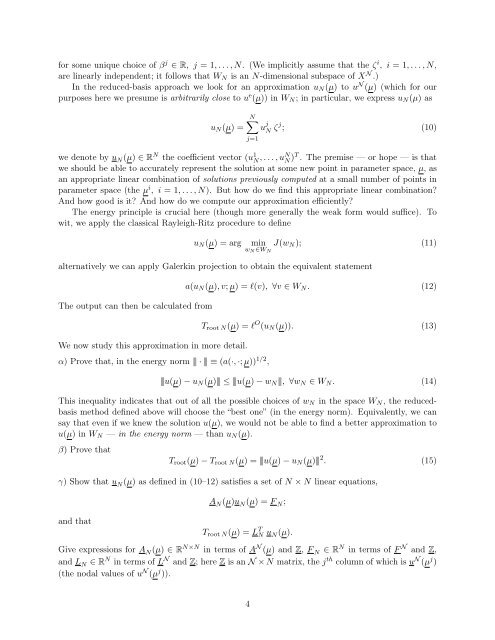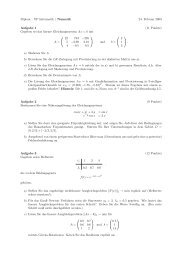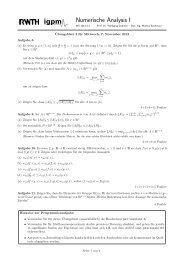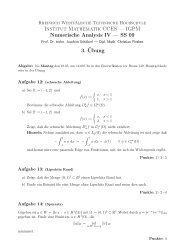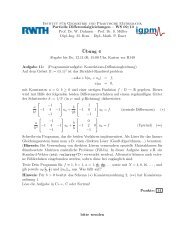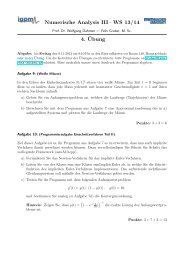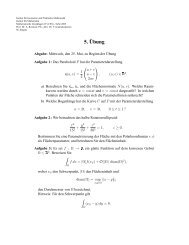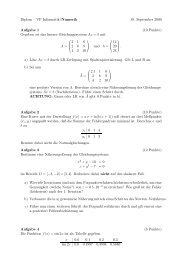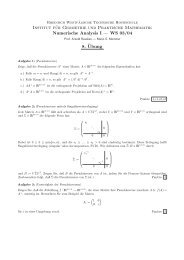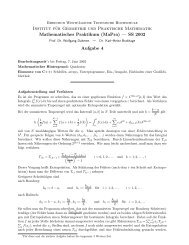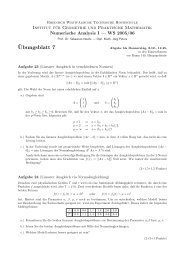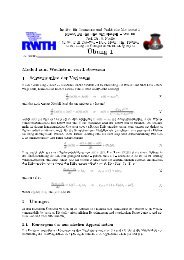The Reduced Basis Method Problem Set 1
The Reduced Basis Method Problem Set 1
The Reduced Basis Method Problem Set 1
You also want an ePaper? Increase the reach of your titles
YUMPU automatically turns print PDFs into web optimized ePapers that Google loves.
for some unique choice of β j ∈ R, j = 1, . . . , N. (We implicitly assume that the ζ i , i = 1, . . . , N,<br />
are linearly independent; it follows that W N is an N-dimensional subspace of X N .)<br />
In the reduced-basis approach we look for an approximation u N (µ) to u N (µ) (which for our<br />
purposes here we presume is arbitrarily close to u e (µ)) in W N ; in particular, we express u N (µ) as<br />
u N (µ) =<br />
N∑<br />
u j N ζj ; (10)<br />
j=1<br />
we denote by u N (µ) ∈ R N the coefficient vector (u 1 N , . . . , uN N )T . <strong>The</strong> premise — or hope — is that<br />
we should be able to accurately represent the solution at some new point in parameter space, µ, as<br />
an appropriate linear combination of solutions previously computed at a small number of points in<br />
parameter space (the µ i , i = 1, . . . , N). But how do we find this appropriate linear combination?<br />
And how good is it? And how do we compute our approximation efficiently?<br />
<strong>The</strong> energy principle is crucial here (though more generally the weak form would suffice). To<br />
wit, we apply the classical Rayleigh-Ritz procedure to define<br />
u N (µ) = arg<br />
min J(w N ); (11)<br />
w N ∈W N<br />
alternatively we can apply Galerkin projection to obtain the equivalent statement<br />
<strong>The</strong> output can then be calculated from<br />
We now study this approximation in more detail.<br />
α) Prove that, in the energy norm || · || ≡ (a(·, ·; µ)) 1/2 ,<br />
a(u N (µ), v; µ) = l(v), ∀v ∈ W N . (12)<br />
T root N (µ) = l O (u N (µ)). (13)<br />
||u(µ) − u N (µ)|| ≤ ||u(µ) − w N ||, ∀w N ∈ W N . (14)<br />
This inequality indicates that out of all the possible choices of w N in the space W N , the reducedbasis<br />
method defined above will choose the “best one” (in the energy norm). Equivalently, we can<br />
say that even if we knew the solution u(µ), we would not be able to find a better approximation to<br />
u(µ) in W N — in the energy norm — than u N (µ).<br />
β) Prove that<br />
T root (µ) − T root N (µ) = ||u(µ) − u N (µ)|| 2 . (15)<br />
γ) Show that u N (µ) as defined in (10–12) satisfies a set of N × N linear equations,<br />
A N (µ)u N (µ) = F N ;<br />
and that<br />
T root N (µ) = L T N u N (µ).<br />
Give expressions for A N (µ) ∈ R N×N in terms of A N (µ) and Z, F N ∈ R N in terms of F N and Z,<br />
and L N ∈ R N in terms of L N and Z; here Z is an N × N matrix, the j th column of which is u N (µ j )<br />
(the nodal values of u N (µ j )).<br />
4


